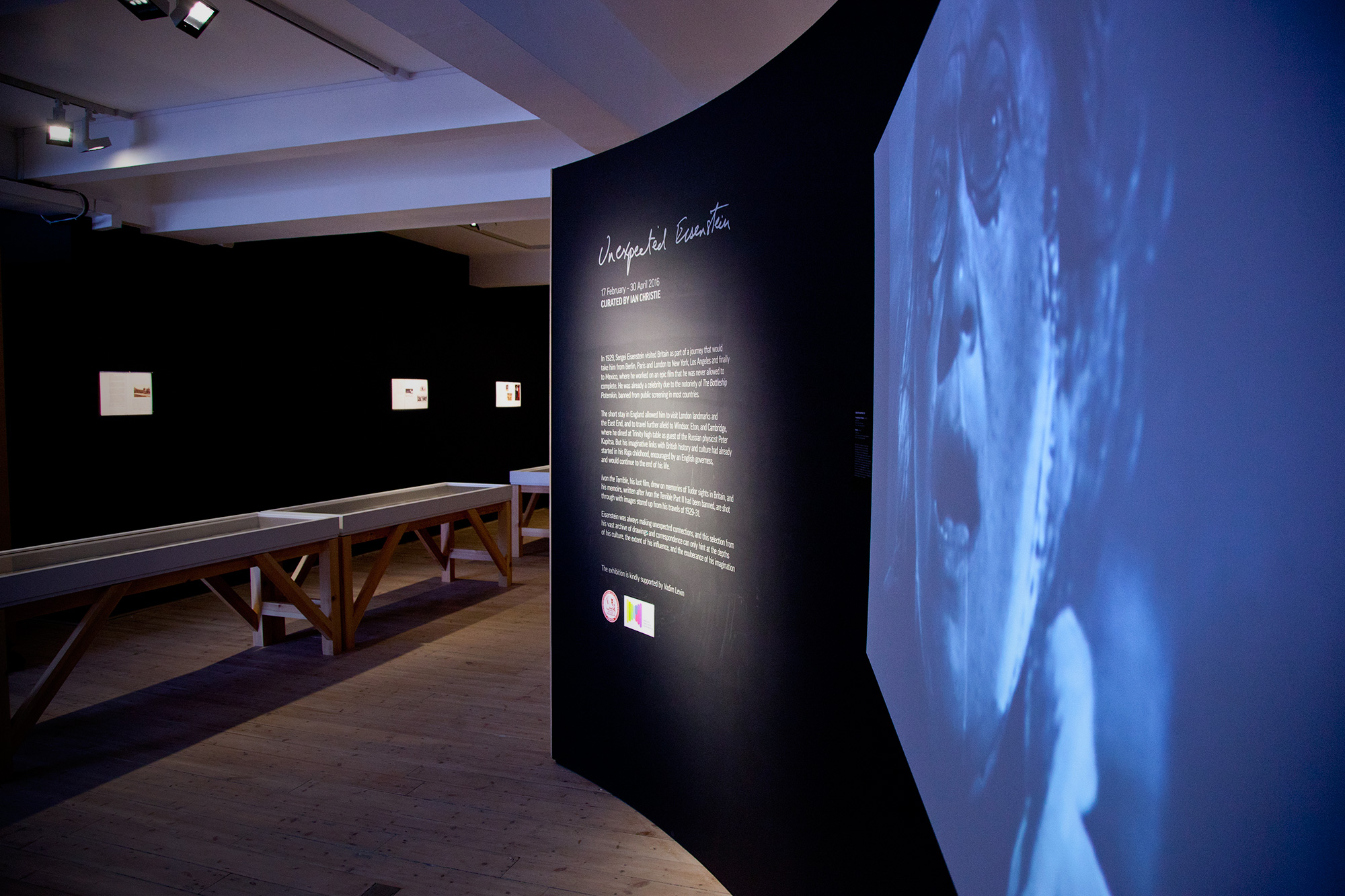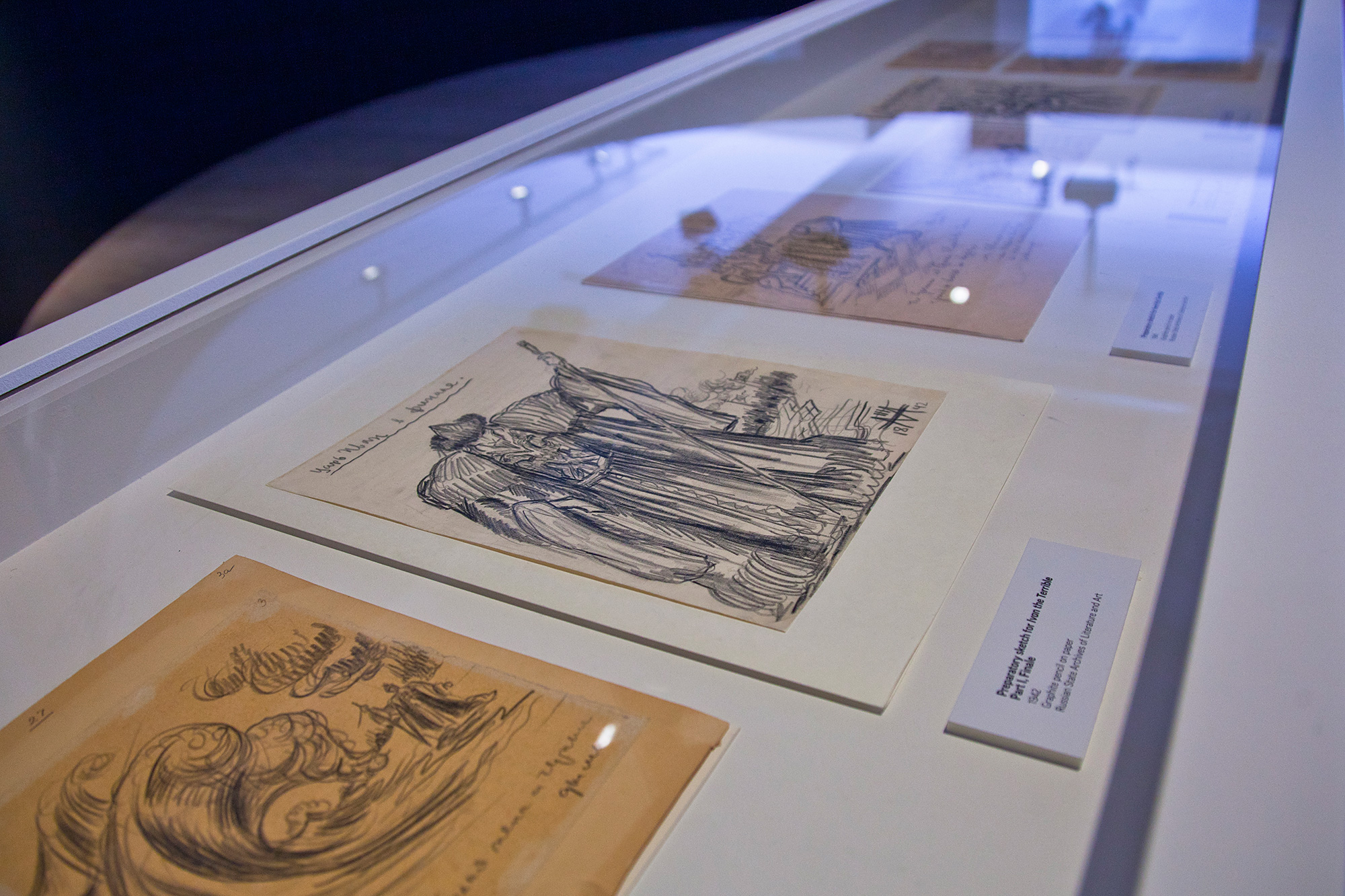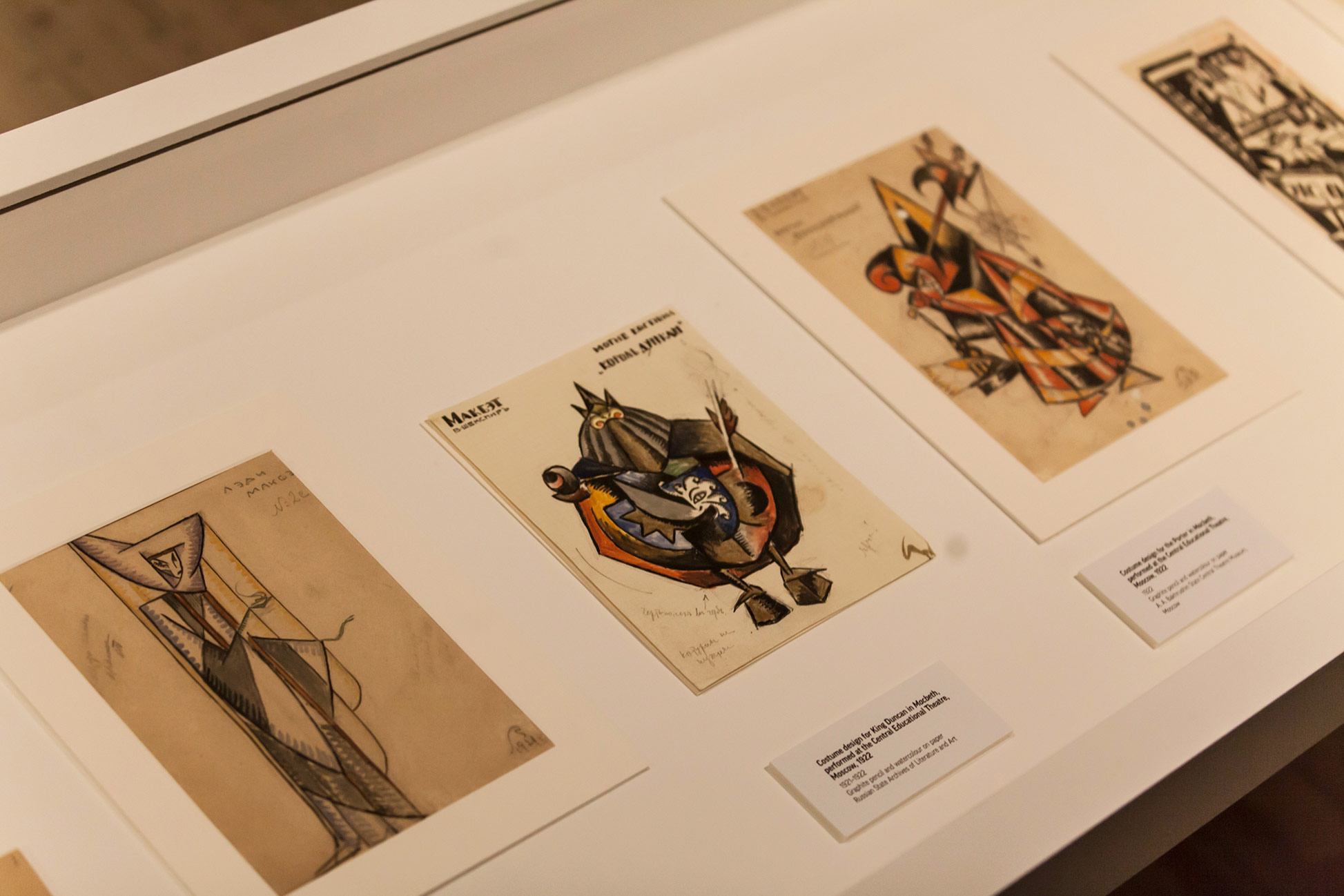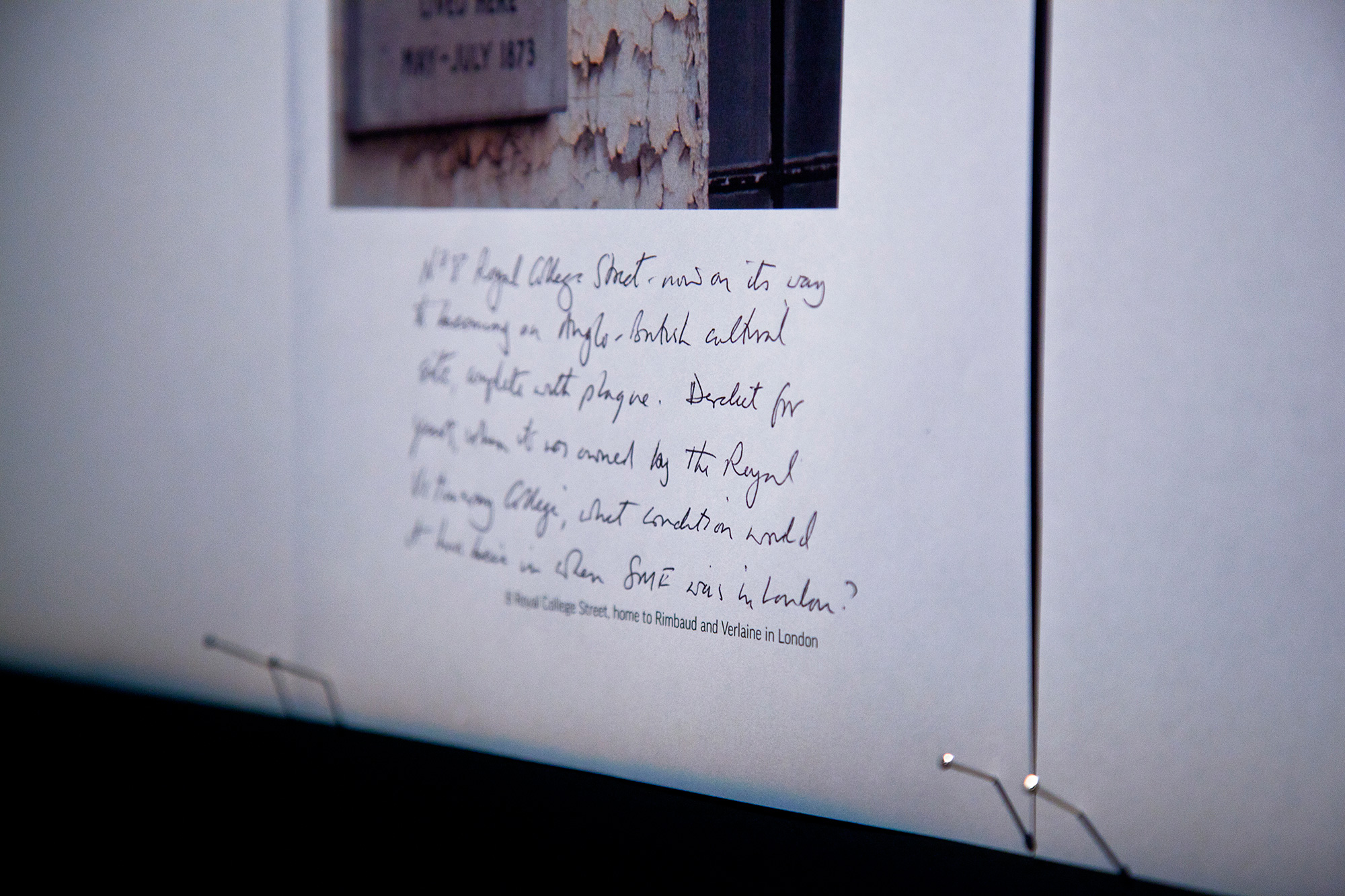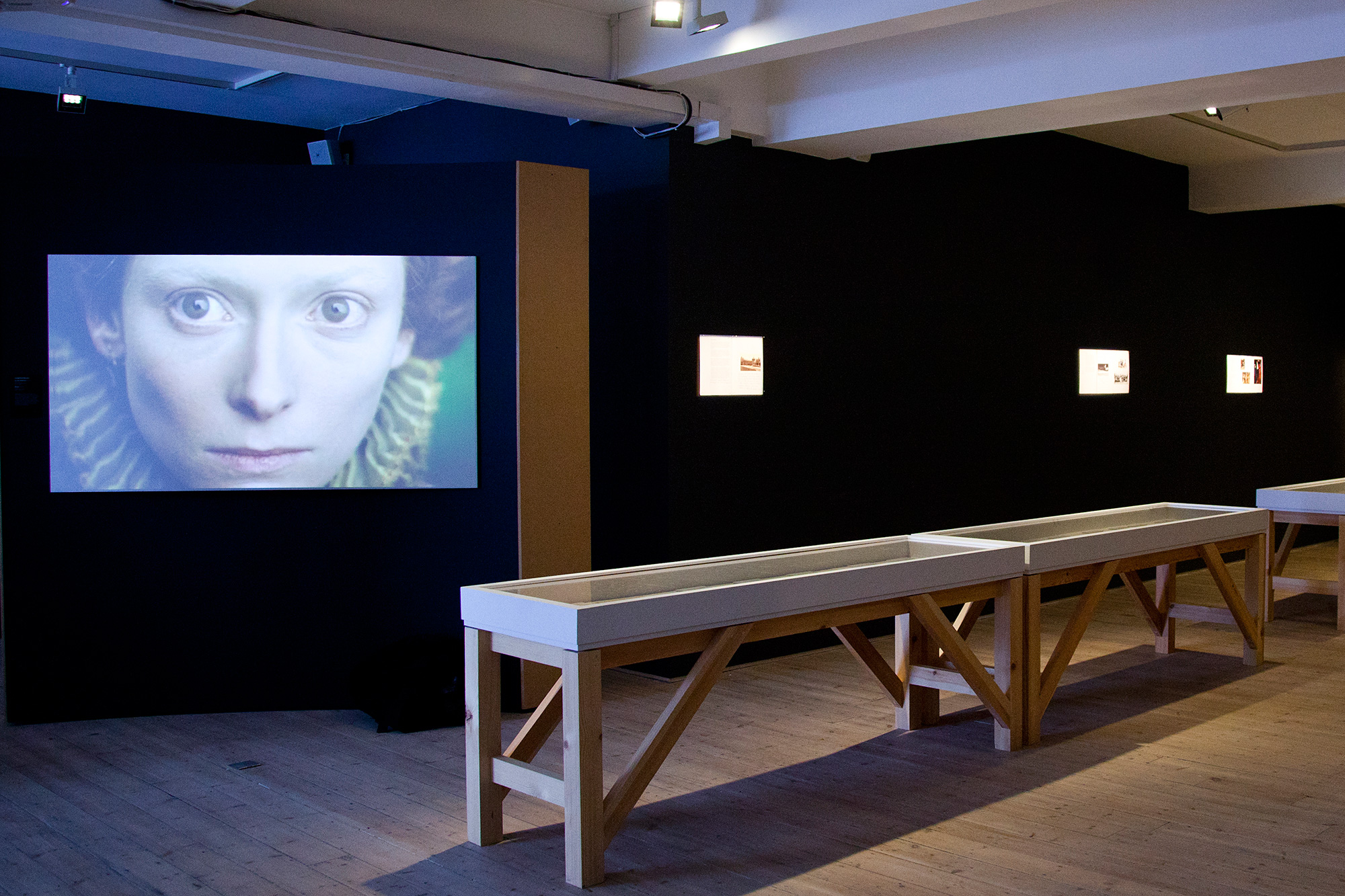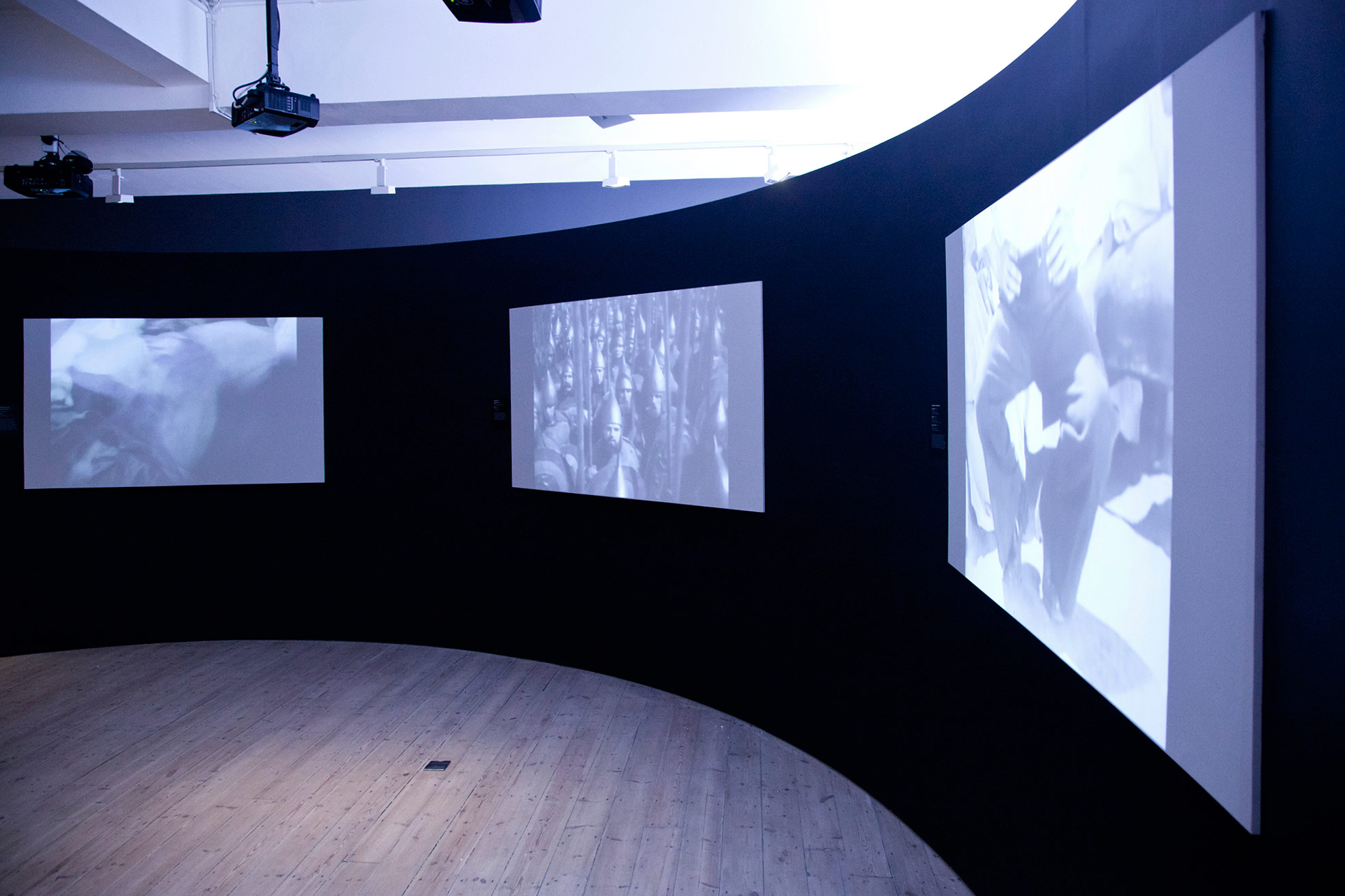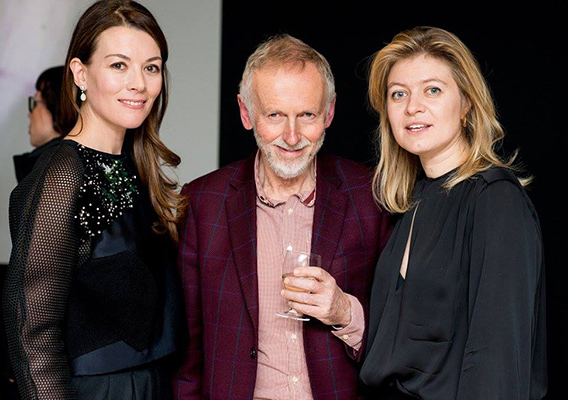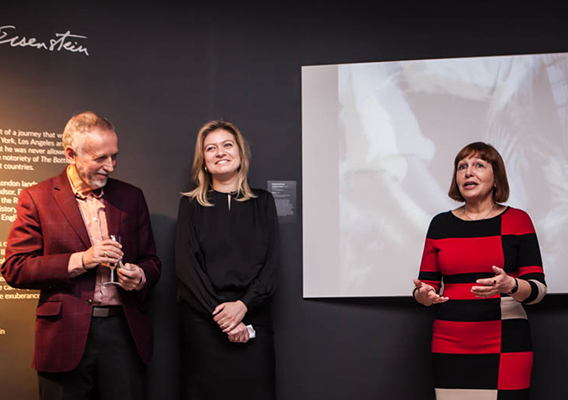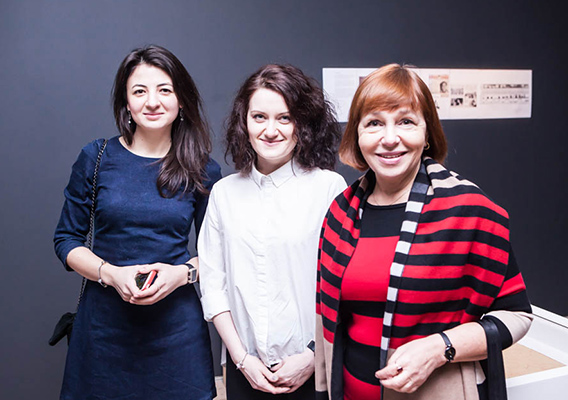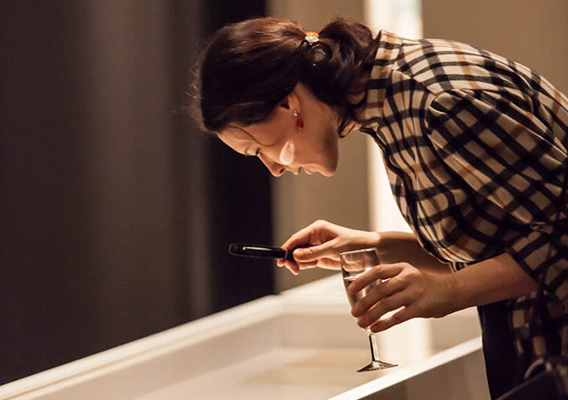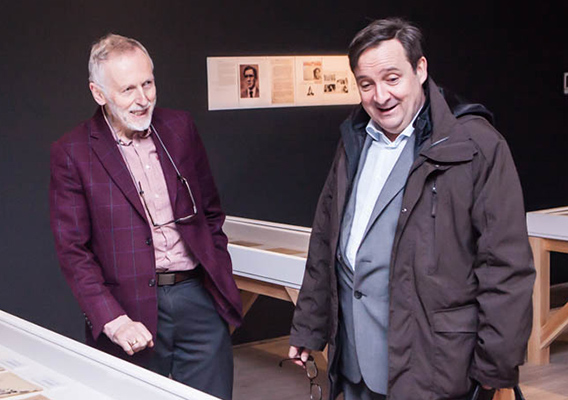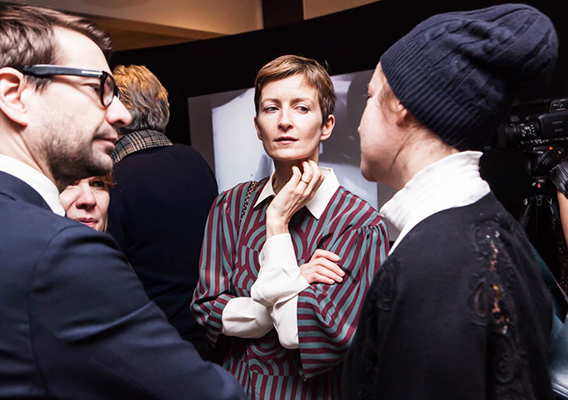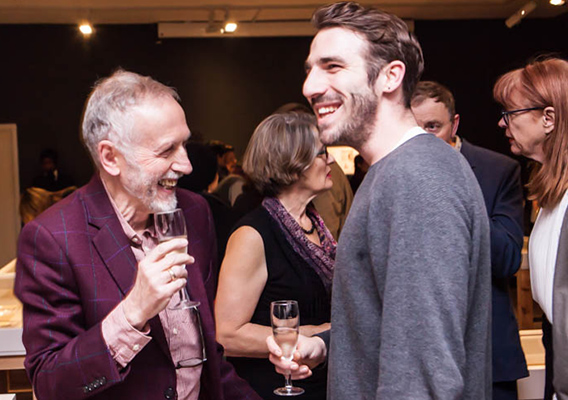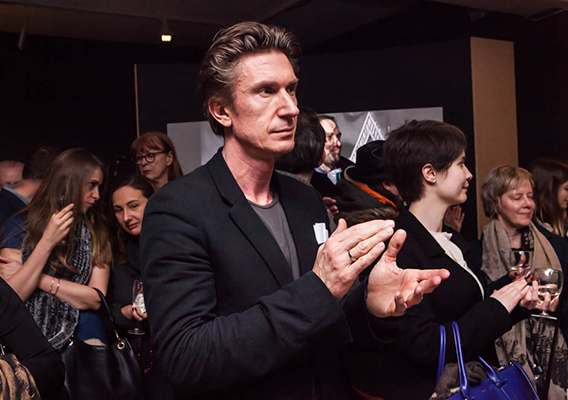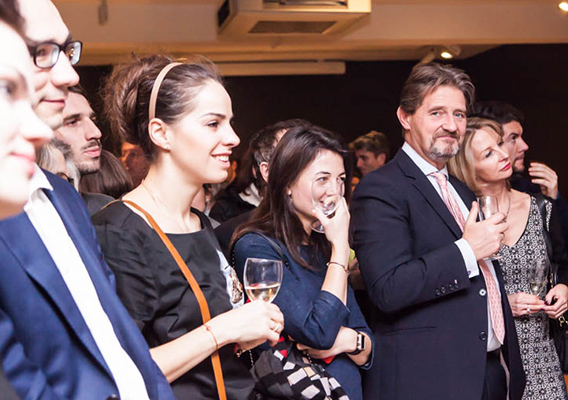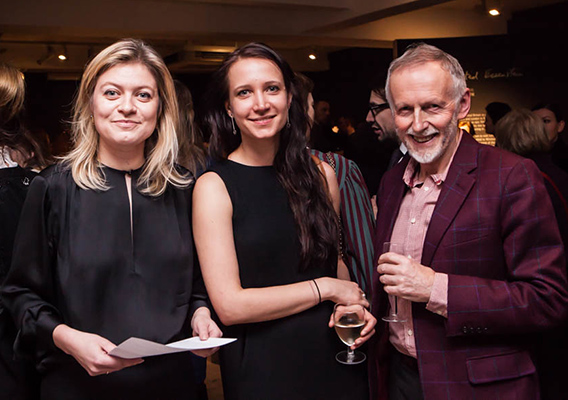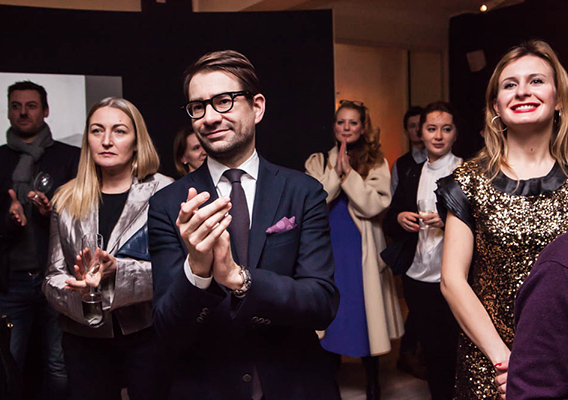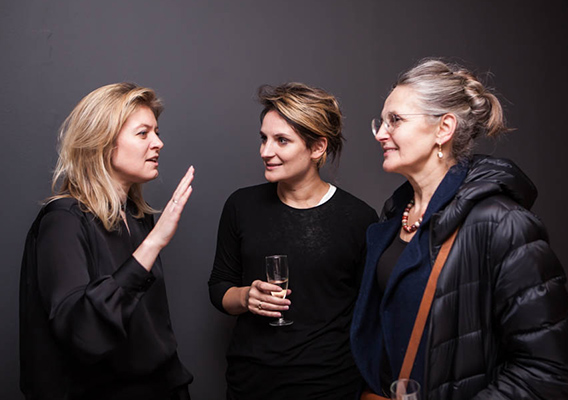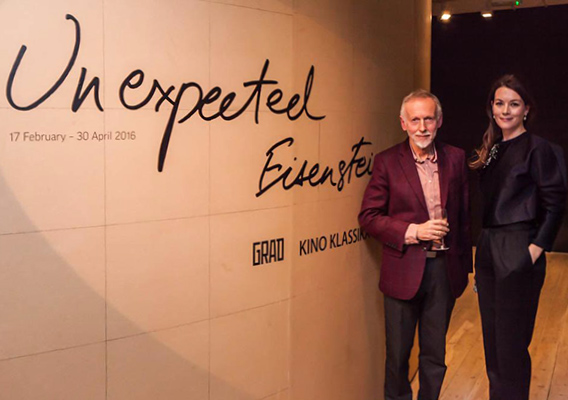Unexpected Eisenstein
Curated by Ian Christie
Exhibition design by Calum Storrie and Katya Sivers
Photographs by Natalia Tarasova and Sophia Schorr-Kon
Eisenstein’s exposure to British culture began at a young age. Authors as diverse as Shakespeare, Dickens, Rudyard Kipling, Arthur Conan Doyle and G. K. Chesterton all influenced his artistic and intellectual development before his only visit to the UK in 1929. The exhibition addresses Eisenstein’s two-month stay in England as part of a state sanctioned, fact-finding visit to the West, during which time he was feted by both filmmakers and the Left Wing intelligentsia, including George Bernard Shaw.
As well as making pilgrimages to tourist destinations such as Windsor Castle, the supposed Baker Street home of Sherlock Holmes, Eton College and London’s East End, Eisenstein was invited to speak by numerous groups including the Workers Film Society and Cambridge University, where he was guest of honour at Trinity College High Table. Despite the banning of The Battleship Potemkin by the Home Secretary (on the grounds of its revolutionary content), Eisenstein nevertheless attended a private screening of the film at the Film Society in November 1929 and delivered a series of influential lectures in the capital. His visit sparked a new interest in Soviet revolutionary cinema amongst both audiences and filmmakers, influencing many 1930s documentaries and even Lawrence Olivier’s Henry V (1944), a film which owes much to Alexander Nevsky (1938).
This alternative strand to Eisenstein’s creative legacy is illustrated through his diverse, imaginative and often surprising graphic works. Ranging from quirky caricatures sketched in his youth to angular theatre designs for Macbeth in the 1920s and drawings inspired by D H Lawrence and Arthur Conan Doyle, this was a means of theoretical and professional experimentation as well as a personal expression. Displayed alongside film clips, photographs, objects and radio broadcasts from the BBC archives, Eisenstein’s drawings will reveal the range of one of the greatest creative minds of the twentieth century.
A series of lectures on the history of Soviet film, from the Revolution to Perestroika, will run at GRAD from February to May 2016. In conjunction with the exhibition an international conference addressing the legacy of Eisenstein will be held at the Courtauld Institute of Art in collaboration with GRAD and Kino Klassika.

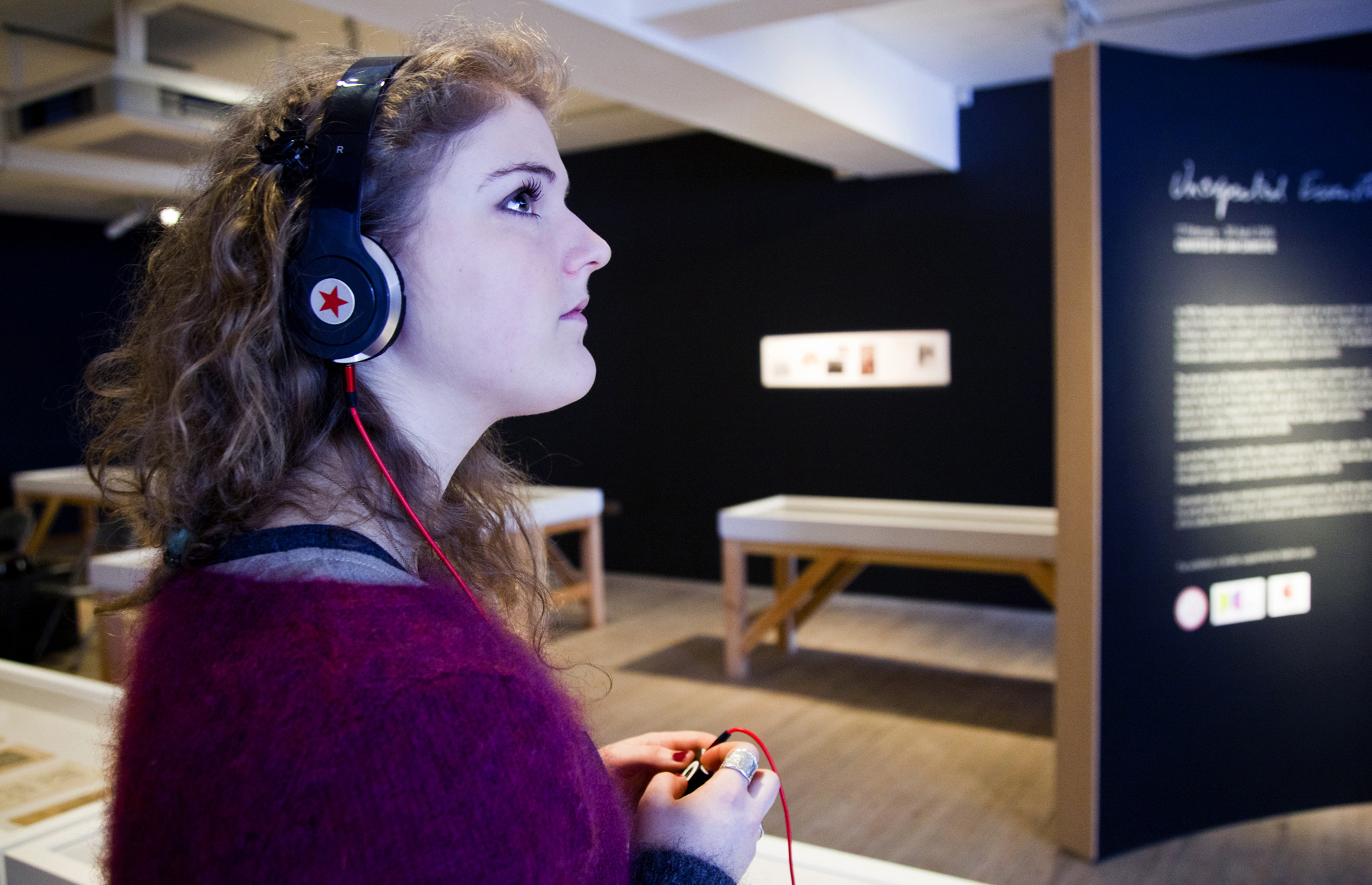
Audio walk
When Eisenstein came to London, instead of visiting tourist sites he got his guide to take him on a tram journey from the Embankment to the end of the line. This audio walk invites visitors to follow the director by making an unconventional journey. Starting inside the exhibition, the walk moves out into the city to circle around GRAD gallery, accompanied by a soundscape of Eisenstein's words and the words of others on his use of geometric forms and the stream of the crowd.
Eisenstein’s Circle is not an audio guide to the exhibition but rather an imaginary soundscape, which leaks from the gallery space into the streets of London.
MP3 players are available to borrow in the gallery or alternatively the audio walk can be downloaded via Soundcloud here.
Idea: Alisa Oleva Script: Debbie Kent and Alisa Oleva Voices: Alexey Andriyanenko, Andy Bodle, Debbie Kent
Ian Christie: Hopes and fears–the Soviet New Wave of the 1960's
28 April 2016



Sergei Eisenstein: His Legacy in Film, Psychology and the Visual Arts
15 — 16 April 2016
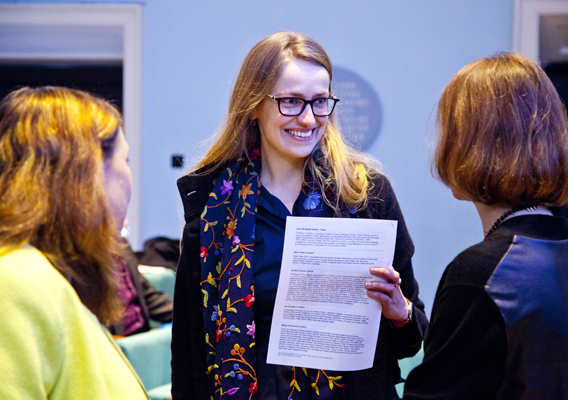
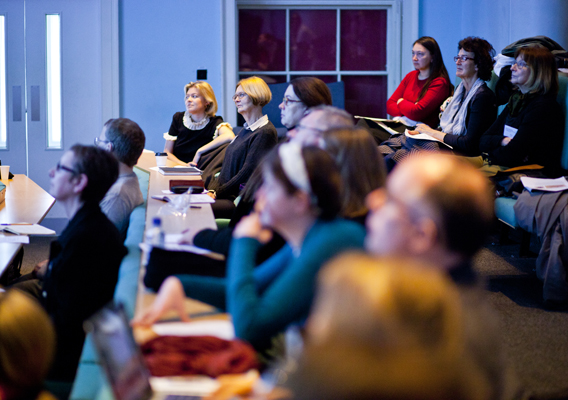
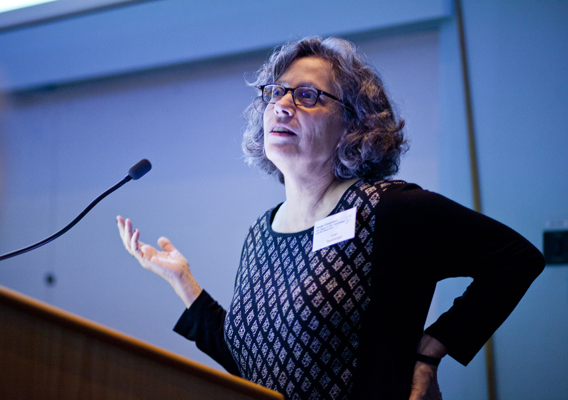
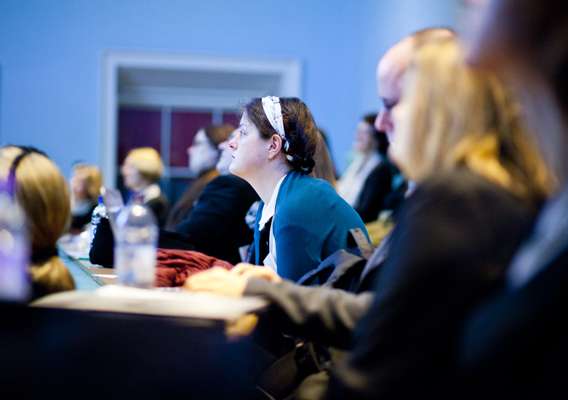

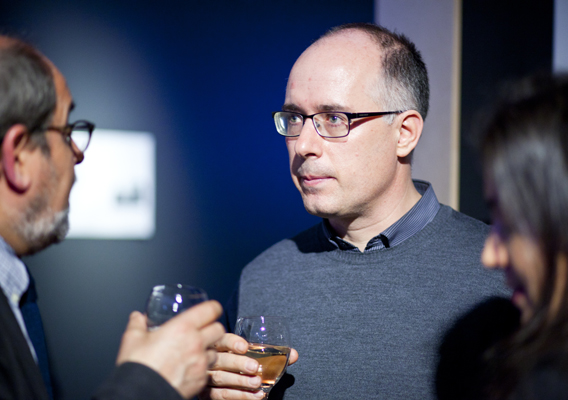
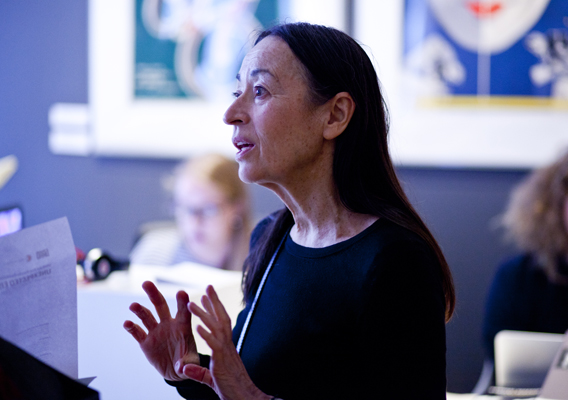
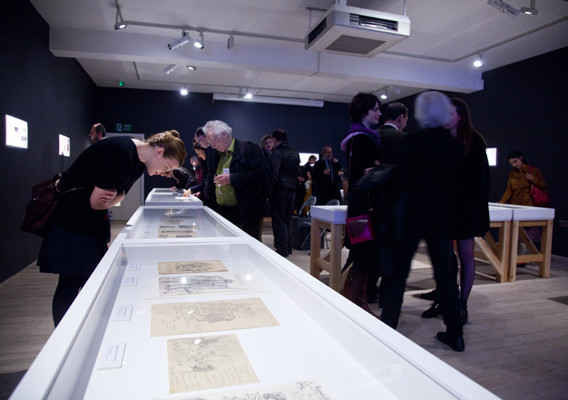
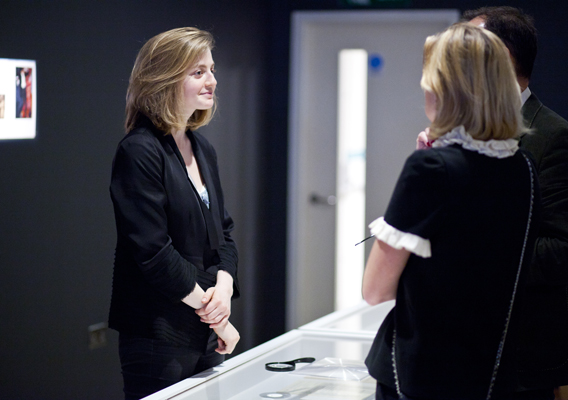
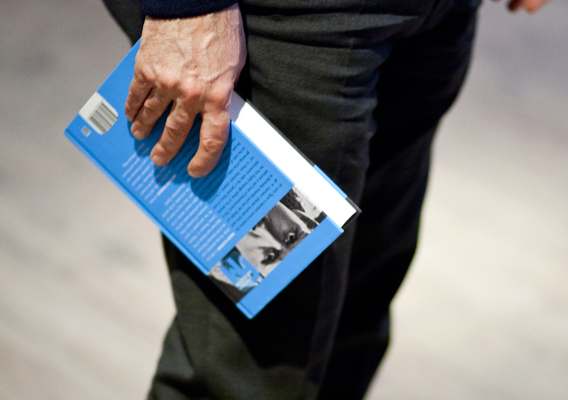
This conference provides a platform for leading Eisenstein experts from around the world to present their current research and to initiate critical discussions about Sergei Eisenstein and his legacy in film, psychology and the visual arts. Hailed as one of the greatest directors of the twentieth century, Sergei Eisenstein is best known for his revolutionary and iconic films from The Battleship Potemkin to Alexander Nevsky and Ivan the Terrible. This conference invites audiences to consider Eisenstein beyond his cinematic achievements.
Held on the occasion of the exhibition of Eisenstein drawings Unexpected Eisenstein organised by GRAD and Kino Klassika Foundation, it strives to explore for the first time his significant yet often overlooked relationship with England. Unexpected Eisenstein offers a rare opportunity to see this varied and often surprising collection of work. It brings together nearly seventy sketches, designs and printed materials from the Bakhrushin State Theatre Museum and Russian State Archive of Literature and Art (RGALI).
Organised by Maria Mileeva and Natalia Murray (The Courtauld Institute of Art) with GRAD (Gallery for Russian Arts and Design), Kino Klassika Foundation, CCRAC (Cambridge Courtauld Russian Art Centre)
Walkshop
09 April 2016
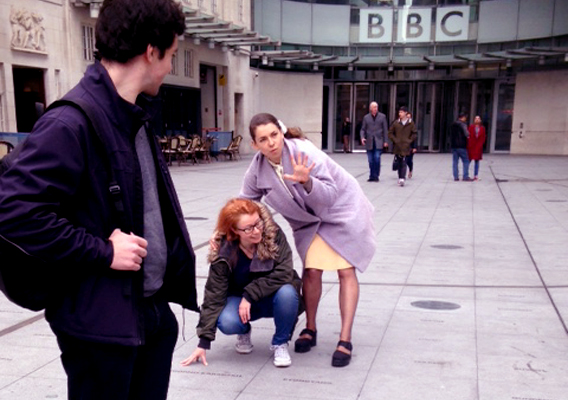
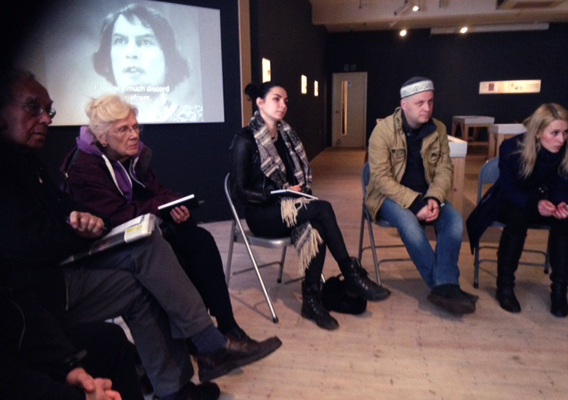
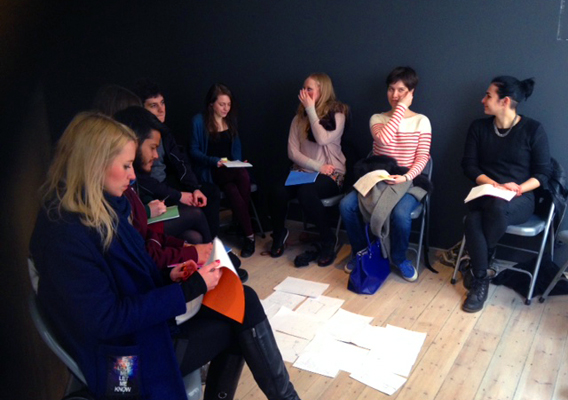
Alisa Oleva and Debbie Kent, who made the audio walk Eisenstein's Circle and work together as The Demolition Project, gave a ‘walkshop’ – a walking workshop – exploring the geometry of the city, inspired by Eisenstein's work. We started at GRAD, then spend most of the time walking in the surrounding streets, finally returning to the gallery at the end to share what we've discovered.
Film and the Making of the New Soviet Person: Bodies, Minds and Feelings
10 March 2016
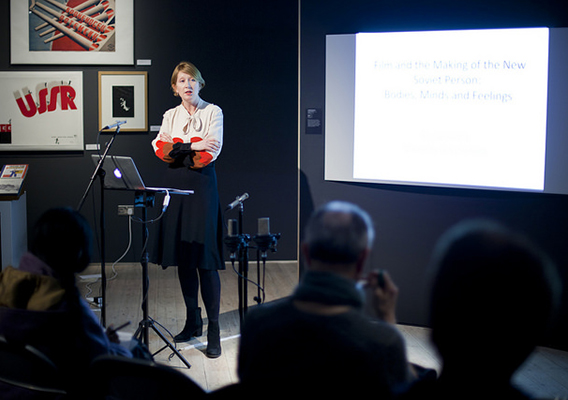
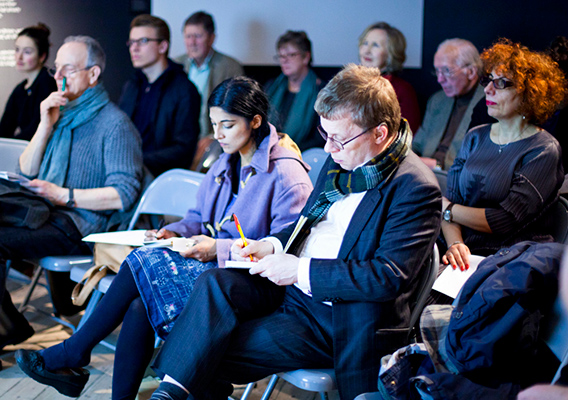
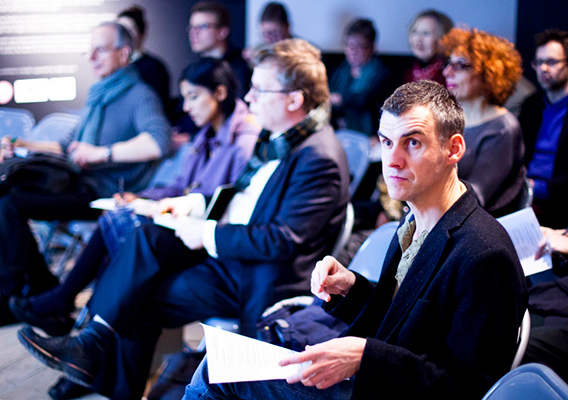
Emma Widdis is Reader in Russian Studies, Department of Slavonic Studies, University of Cambridge. She has published widely on early Soviet cinema, with particular focus on film and the senses. In this lectures she explores how early cinema contributed to the making of a new ‘Soviet person’.
Soviet Colour Film, 1929–1945: An Experiment Understood by Very Few
03 March 2016
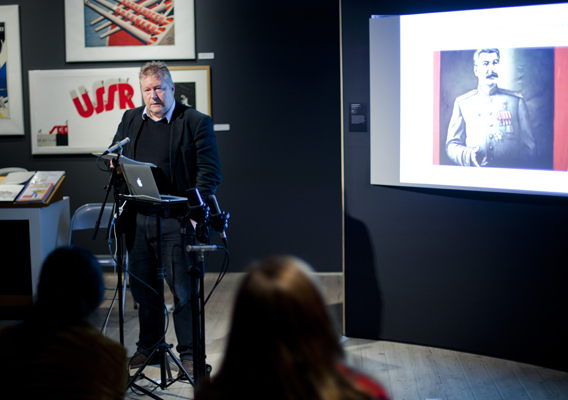
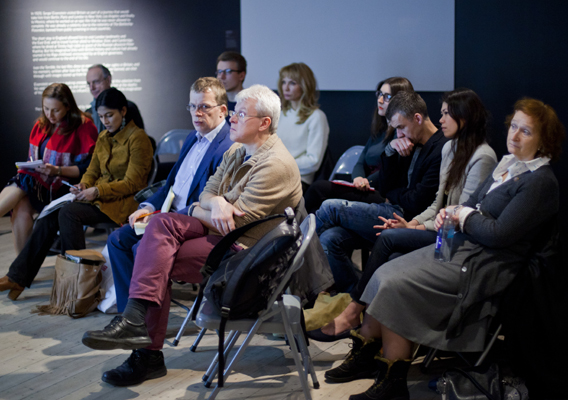
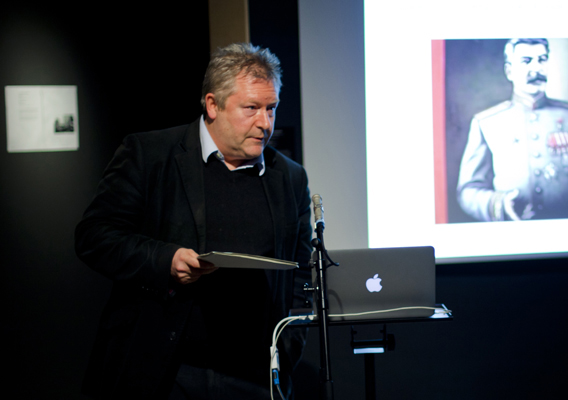
Dr Phillip Cavendish of SSEES joined us to discuss the introduction of colour film to the Soviet Cinema scene. His lecture delved into the initial experiments with colour plates that occurred in the late 1920’s and the development of colour film through the 1930’s and 40’s.
Maxim and co: creating the new heroes and heroines of the 1930s
25 February 2016
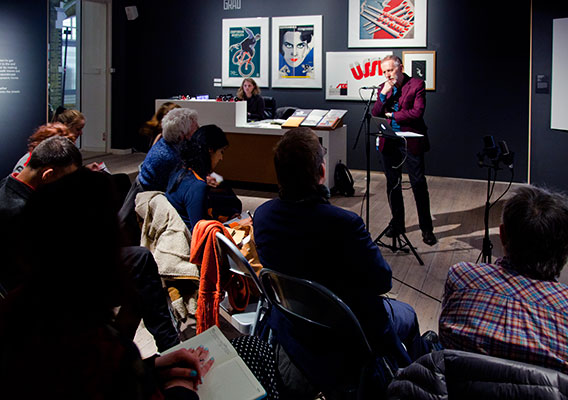
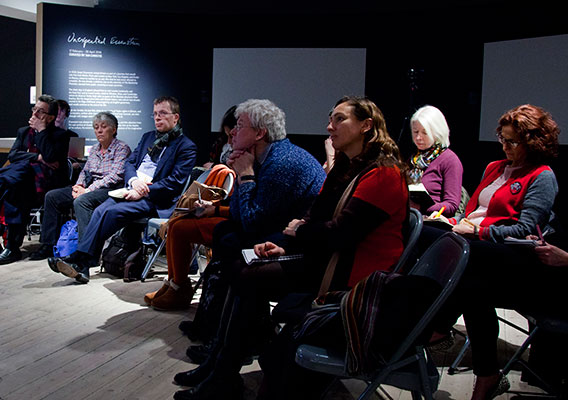
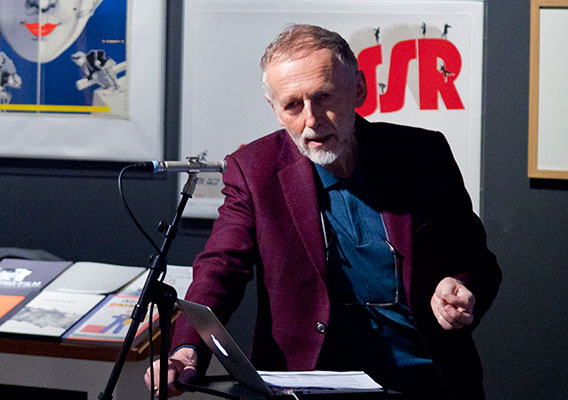
Unexpected Eisenstein curator Ian Christie discussed how the 1930’s saw a change in the way Soviet cinema portrayed its heroes and heroines. Christie talked about how socialist realism featured in 1930’s cinema and the effect that it had on social propaganda and considered the role that the Maxim trilogy and similar films had to play in the engineering of the ideal soviet person.



